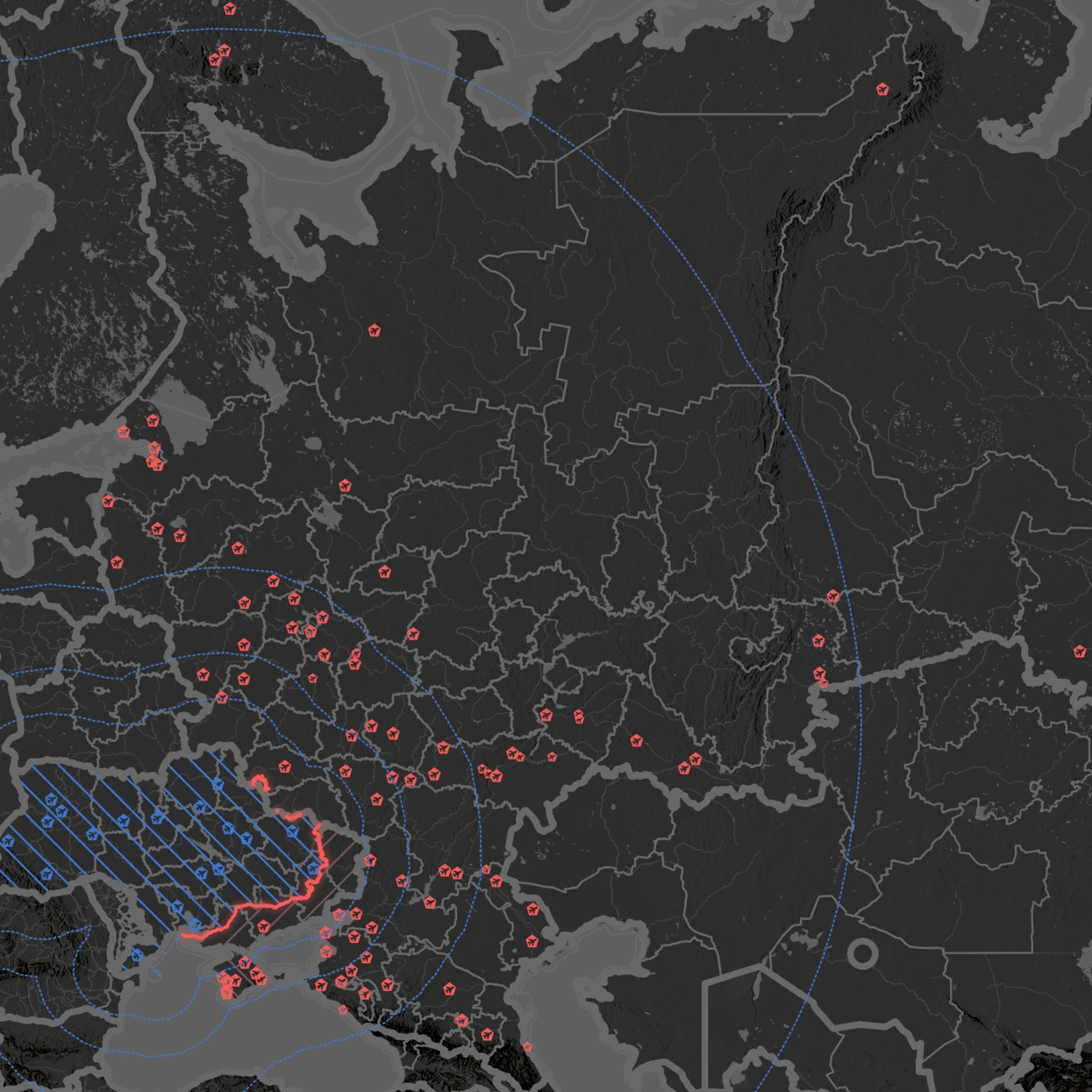
The dozens of bases that could be in Ukraine’s crosshairs now that the West has green-lit long-range missile strikes deeper inside Russia
Last week, The Guardian, citing sources in the British government, reported that the U.K. had decided to allow Ukraine to use long-range Storm Shadow cruise missiles to strike targets on Russian territory. A few days later, The New York Times wrote that the U.S. was also set to lift its restrictions. So far, neither country has announced a decision publicly, and it’s possible that they never will out of fears of escalation. In any case, however, the prospect of Western-made long-range missiles striking Russian territory is as close as it’s been since the start of the war. Ukraine’s primary targets, according to military experts, would be Russian air bases where bombers, fighter jets, and helicopters are stored. Meduza’s analysts have used open sources to determine and map which facilities would be at risk of coming under fire from Western missiles.
Update: On November 17, 2024, The New York Times reported that U.S. President Joe Biden had granted Ukraine permission to use its long-range ATACMS missiles to defend Ukrainian units deployed in Russia’s Kursk region. The same day, Le Figaro wrote that France and the U.K. had authorized Ukraine to use their SCALP and Storm Shadow missiles for strikes on Russian territory, though this information was later removed from the outlet’s report. This article’s headline has been changed accordingly.
What to know about these maps
There are three main factors that make it hard to determine exactly which Russian air bases could become vulnerable to strikes from Western-made missiles.
- Firstly, we don’t know what restrictions on the use of long-range weapons Ukraine’s Western allies will leave in place. It’s possible that these constraints will rule out a significant portion of the targets that would be physically possible for Ukraine to hit with the new weapons. However, no information about what these restrictions would look like has been published in open sources. As a result, the maps below assume there will be no such restrictions and only takes into account the weapons’ physical capabilities.
- Secondly, the true technical capabilities of military-grade weapons are usually classified, with open sources typically containing only vague descriptions taken from press releases put out by armies and manufacturers. For example, the 560-kilometer range attributed to Storm Shadow missiles by most media sources comes from Royal Air Force reports that give the range as “more than 300 nautical miles” (equivalent to about 556 kilometers). We don’t know the true limits of the missiles’ range, so we’re relying on the numbers more often provided by trade publications.
- Finally, we know relatively little about how the Russian military actually uses specific air bases, which bases are most important logistically, and which ones are effectively unused. Satellite images indicate that rather than waiting for Ukraine’s Western allies to change their policy, Russia started transferring planes to bases further from the Ukrainian border this summer. At the same time, these transfers can take as little as a few hours, so the situation is highly dynamic. The maps below show all of the Russian Defense Ministry’s active air bases (including ones in occupied Ukrainian territory) that can be identified from open sources.
Another important caveat concerns the method we used to estimate the missiles’ range. Transporting a launch system (or flying a missile by plane for launch) all the way to the front line is extremely risky for the army firing the missile. For this reason, these maps assume that not all territory controlled by Ukraine can be used to launch missiles. The highest risk zone is the area within about 15 kilometers (nine miles) from the contact line (this territory is easily targeted by artillery and monitored by drones). As a result, we’ve subtracted 15 kilometers from the missiles’ estimated range.
Meduza has condemned Russia’s invasion of Ukraine from the very start, and we are committed to reporting objectively on a war we firmly oppose. Join Meduza in its mission to challenge the Kremlin’s censorship with the truth. Donate today.
It should also be noted that Ukraine could use these long-range weapons to target facilities that aren’t military in nature. Additionally, because of Russian air defense systems, navigation errors, and other unpredictable factors, the missiles could hit civilian facilities. This risk is highest during complex attacks involving large quantities of missiles and drones, as these kinds of attacks are the most effective at evading air defenses. So far this tactic has only been available to Russia, but if Ukraine gets permission to use Western-made missiles to strike targets deep within Russian territory, it will also become capable of “overwhelming” its opponent’s air defense systems. This could result in a rise in strikes on non-military sites.
What these maps show
The maps below show the Russian territories that are vulnerable to strikes by four types of weapons:
- The MGM-140A Block I and MGM-164A Block II variants of ATACMS quasi-ballistic missiles (though the U.S. has not given its approval for Ukraine to use these weapons to strike Russian territory);
- Storm Shadow/SCALP EG cruise missiles;
- Ukrainian homemade drones made from converted light aircraft
Ukraine’s homemade drones are a fundamentally different type of weapon from missiles and can only carry significantly smaller warheads, but their range allows them to strike targets far beyond the Russian border. Recently, for example, a drone made from a converted A22 Foxbat ultralight aircraft was shot down in Russia’s far northern Murmansk region near the Olenya air base.